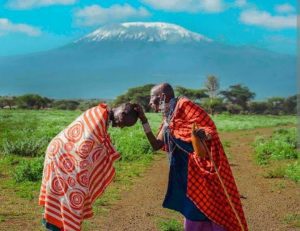
East Africa is a region renowned for its rich cultural diversity, and one of the critical factors that has contributed to this diversity is communication. Communication plays a vital role in shaping the cultural practices and traditions of the various ethnic groups in East Africa. Understanding the basics of East African communication is crucial in appreciating this region’s intricate tapestry of cultures.
Understanding the Basics of East African Communication
East African communication is a complex system involving verbal and non-verbal elements. Language, as a cornerstone of communication, plays a significant role in shaping the cultural identity of East African communities. Additionally, non-verbal communication, such as gestures, facial expressions, and body language, carries profound meaning in East African societies.
The Role of Language in East African Communication
Language is more than a tool for communication; it is deeply intertwined with culture. In East Africa, numerous languages are spoken, each with unique characteristics and cultural nuances. Different languages allow for the expression of diverse perspectives and traditions.
For example, in Kenya, the official languages are English and Swahili. English is widely used in formal settings, such as government offices and schools, while Swahili is the lingua franca, spoken by most of the population. Swahili serves as a unifying language, enabling people from different ethnic groups to communicate and understand each other.
In Tanzania, Swahili is the official language and is important in everyday life. It is used for communication and serves as a symbol of national unity and pride. Swahili’s rich history and cultural significance make it an integral part of Tanzanian identity.
However, language barriers can present challenges in intercultural communication. Misunderstandings and misinterpretations may arise when individuals from different language backgrounds interact. Overcoming these barriers requires patience, open-mindedness, and a willingness to learn from one another.
Efforts to bridge the language gap in East Africa have led to the developing programs and initiatives promoting multilingualism. These initiatives foster understanding and inclusivity by encouraging individuals to learn and appreciate different languages. By embracing linguistic diversity, East Africans can enhance communication and strengthen social cohesion.
Non-verbal Communication in East Africa
Non-verbal communication is a universal language that transcends words. In East Africa, gestures, facial expressions, and body language are powerful means of conveying messages and emotions. A subtle hand movement or a particular facial expression can convey respect, hospitality, or agreement.
For instance, in Rwanda, a country known for its cultural traditions, non-verbal communication plays a vital role in daily interactions. The Rwandan people have a unique greeting called “gusabira,” which involves a gentle bow while holding one’s hands together. This gesture signifies respect and is commonly used when greeting elders or people of higher social status.
Understanding the intricacies of non-verbal communication in East Africa is essential as it helps build rapport and establish trust in interpersonal relationships. It is an art that requires attentiveness and a keen eye for nuances.
In Uganda, non-verbal cues are often used to express emotions and intentions. For example, a nod of the head and a smile indicate agreement or approval, while a furrowed brow and crossed arms may indicate skepticism or disagreement.
Moreover, body language plays a significant role in conveying social hierarchies and power dynamics. In many East African cultures, maintaining eye contact while speaking to someone of higher status is seen as a sign of respect. On the other hand, avoiding direct eye contact may be interpreted as a sign of deference or modesty.
Understanding verbal and non-verbal communication in East Africa is crucial for effective cross-cultural interactions. By appreciating the diversity of languages and mastering the art of non-verbal cues, individuals can foster meaningful connections and promote cultural understanding in this vibrant region.
The Intersection of Communication and Culture in East Africa
Communication and culture are intricately intertwined in East Africa. Cultural practices and traditions shape communication styles, while communication plays a role in reinforcing and preserving cultural identity.
East Africa is a region known for its diverse and vibrant cultures. Each community has unique customs and traditions, from the Maasai people of Kenya and Tanzania to the Oromo people of Ethiopia. These cultural practices are deeply rooted in the history and identity of the people, and communication serves as a vehicle for sharing and preserving them.
How Communication Shapes Cultural Practices
In East Africa, communication serves as a vehicle for sharing cultural practices and traditions. Through storytelling, songs, and oral history, communities pass on their rich heritage from one generation to another. These forms of communication transmit knowledge, evoke emotions, and create a sense of connection among community members.
Storytelling, in particular, holds a special place in East African cultures. It is a way of preserving history, teaching moral lessons, and entertaining. Elders, revered for their wisdom and experience, often take on the role of storytellers, passing down the collective wisdom of their ancestors.

Music and dance also play a significant role in East African communication. Traditional songs and dances are not only forms of entertainment but also serve as a means of expressing emotions, celebrating important events, and strengthening social bonds. They are often accompanied by intricate movements and vibrant costumes, reflecting the diversity and beauty of the region’s cultures.
The Influence of Culture on Communication Styles
Cultural values and norms profoundly influence communication styles in East Africa. Respect, hierarchy, and communalism are central aspects of many East African cultures. Therefore, communication is often indirect and veiled with politeness and diplomacy to maintain harmony within the community.
For example, in some East African cultures, refusing a request or expressing disagreement directly is considered impolite. Instead, individuals may use subtle gestures, non-verbal cues, or indirect language to convey their message. This indirect communication style requires a keen understanding of cultural nuances and the ability to read between the lines.
Furthermore, communalism, which emphasizes the importance of the community over the individual, shapes communication in East Africa. Decision-making processes often involve extensive consultations and consensus-building, as the opinions and perspectives of all community members are valued. This participatory approach to communication fosters a sense of inclusivity and collective responsibility.
Understanding and adapting to these communication styles is crucial when engaging with East African communities, whether in business, diplomacy, or everyday interactions. Respect for cultural norms and a willingness to learn and adapt is essential for effective communication and building meaningful relationships.
The Diversity of East African Cultures
East Africa has many ethnic groups with distinct cultures, traditions, and languages. Exploring the various ethnic groups and their contributions to the overall cultural diversity of the region is essential in understanding the complexities of East African communication.
A Look at the Various East African Ethnic Groups
From the Maasai people of Kenya and Tanzania to the Amhara and Oromo in Ethiopia, East Africa exhibits a kaleidoscope of ethnic diversity. Each ethnic group has its language, customs, and unique way of life. By embracing diversity, East Africa celebrates its rich cultural heritage.
The Role of Tradition in East African Cultures
Tradition holds immense significance in East African cultures, shaping beliefs, values, and social structures. Communication plays a crucial role in the preservation and transmission of these traditions. Oral storytelling, rituals, and ceremonies act as vehicles to maintain cultural heritage.
The Impact of East African Communication on Cultural Diversity
The way people communicate has the power to shape cultural diversity and foster intercultural understanding. In East Africa, communication can be harnessed to promote cultural awareness and preserve traditional practices.
Promoting Cultural Understanding through Communication
By facilitating dialogue and exchange, communication bridges the gaps between different cultures in East Africa. When individuals take the time to listen, comprehend, and respect diverse viewpoints, they not only enhance their understanding but also foster harmony and unity.
The Role of Communication in Cultural Preservation
Amidst globalization, it is crucial to acknowledge the role of communication in preserving East African cultural heritage. Traditional forms of communication, such as storytelling and music, hold intrinsic value in maintaining cultural practices and historical narratives.
Embracing the power of communication can help East African communities safeguard their ancient traditions and prevent cultural erosion.
Challenges and Opportunities in East African Communication
While communication is a unifying force, it also presents challenges in East Africa. Overcoming language barriers and harnessing the potential of cultural exchange are vital to propel communication forward in this region.
Overcoming Language Barriers in East Africa
The linguistic diversity in East Africa can pose obstacles to effective communication. However, initiatives to promote multilingualism, translation services, and language learning programs can bridge these gaps and enhance cross-cultural understanding.
The Potential of Communication for Cultural Exchange in East Africa
Communication can be a catalyst for meaningful cultural exchange in East Africa. Platforms that facilitate dialogue between different ethnic groups, such as conferences, festivals, and art exhibitions, hold the potential to strengthen cultural diversity and promote cross-cultural collaboration.
Conclusion
Exploring East African communication unveils a world of intricate cultural practices, linguistic diversity, and powerful non-verbal communication. By embracing this diversity, engaging in meaningful communication, and overcoming barriers, we can foster mutual understanding and appreciation for the rich cultural tapestry of East Africa.




